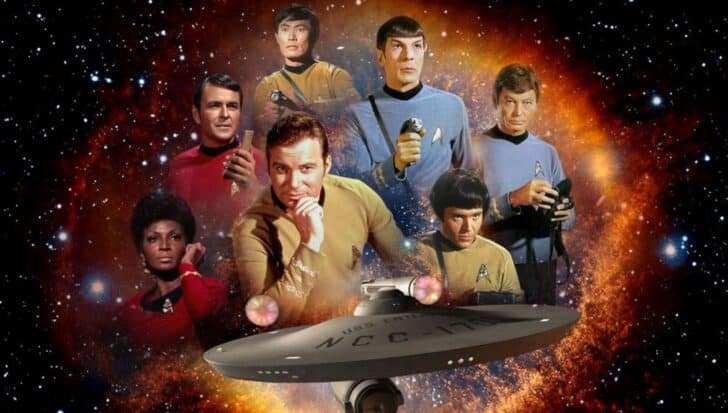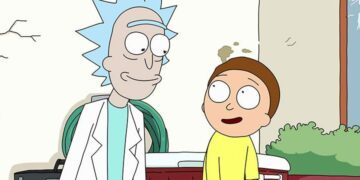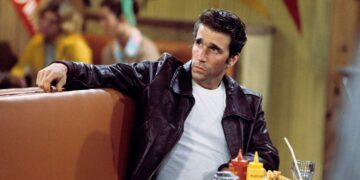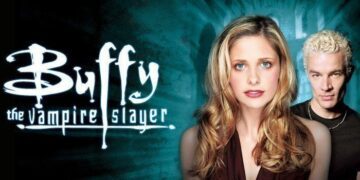Star Trek has captured imaginations for decades, inspiring real-life heroes and technologies along the way.
Behind the scenes, the show has boldly gone where no other show has gone before, challenging social norms and practices.
Like much of science fiction, it has tried to show us the incredible things we can do as earthlings if we work together and look to the stars.
Check out these out-of-this-world facts that show how Star Trek truly pushes the boundaries of what TV could be.
Captain Kirk and Uhura shared a milestone kiss on TV.

Although not the first interracial kiss on television, their kiss was the first kiss between a black and a white person on American television.
The kiss was highly debated at the time and is now considered by many as a huge milestone in the normalization of interracial relationships.
The historic moment happened in the episode “Plato’s Stepchildren,” which aired in 1968, one year after the American Supreme Court repealed laws prohibiting interracial relationships.
Klingon is the most widely spoken fictional language.

Few can call themselves completely fluent, but more and more people are trying to learn with Duolingo, which added a Klingon course to its app in 2018.
The language was created by linguist Mark Okrand for the 1979 film Star Trek: The Motion Picture.
Along with actor James Doohan (Scotty) and writer Jon Povill, the trio developed the language to sound as alien as possible.
In 1985, Okrand released “The Klingon Dictionary,” and fans began to learn their favorite fictional language.
Scientists are trying to build a real tractor beam.
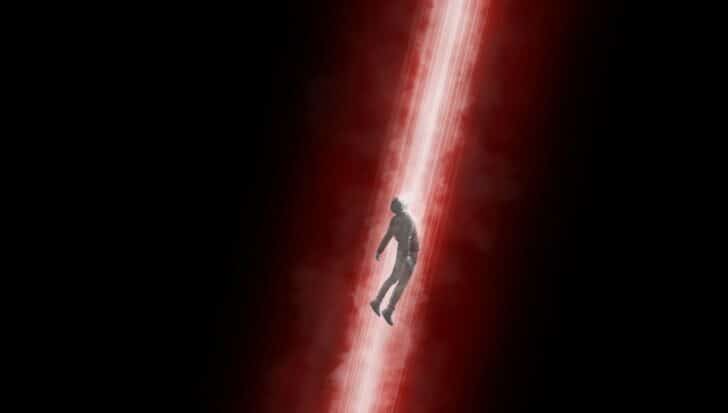
Inspired by the ones on Star Trek’s Starships, a group of researchers at the Department of Aerospace Engineering Sciences at the University of Colorado Boulder is trying to build a tractor beam.
The tractor beams won’t be used to entrap alien spaceships, though. They are there to solve the growing problem of space junk created by the many satellites that orbit Earth.
The Picard Maneuver makes the Enterprise appear in two places at once.

In the series, the maneuver is touted as Picard’s most famous battle tactic.
A short warp jump makes the enemy’s crew believe that the Enterprise has appeared in two places, allowing the Federation crew time to strike.
On set, the Picard Maneuver took on a whole new meaning, becoming an inside joke about how actor Patrick Stewart would pull his shirt down to readjust his uniform every time he stood up.
The Prime Directive was a response to the atrocities of the Vietnam War.
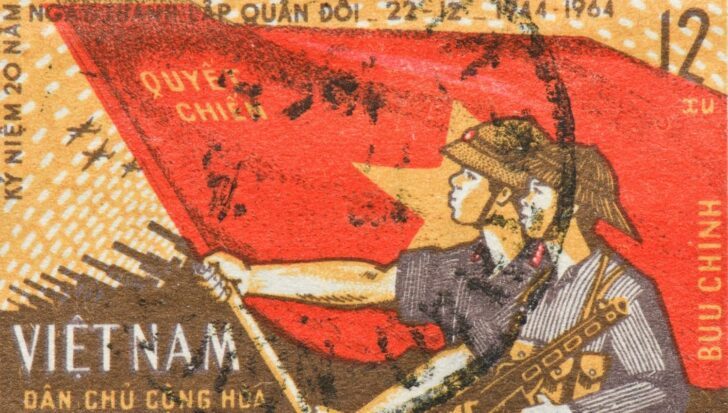
This crucial rule, which forbids the Federation from imposing its own beliefs and technologies on other cultures, was invented by one of Star Trek’s writers, Gene L. Coon.
The original series (TOS) aired while the US was still fighting in the war with Vietnam.
Writers on the show opposed the colonial nature of American involvement and created the directive to take a stance against colonial interference of other cultures.
Dr. Martin Luther King Jr was a huge fan of Star Trek.

Toward the end of the second season of the original series (TOS), Nichelle Nichols (Uhura) signed her resignation letter and wanted to return to Broadway.
Before the resignation could be finalized, she was approached by Dr. Martin Luther King Jr, who convinced her to stay on the show.
He mentioned the influence she had as a black female actress on young minds at the time of the Civil Rights Movement.
Dr. King mentioned that Star Trek was the only show he would allow his kids to stay up late to watch.
The Star Trek reboot trailer broke Apple.com’s record for the most downloads.

In 2009, a reboot of Star Trek was released, which excited many long-time fans of the series.
The trailer aired on Apple TV, and in 24 hours, more than 1.8 million people downloaded it.
This broke Apple’s record for the most downloads, and that number only grew larger, reaching 5 million downloads after just five days.
The Invincible-class starship is the largest that Starfleet ever built.
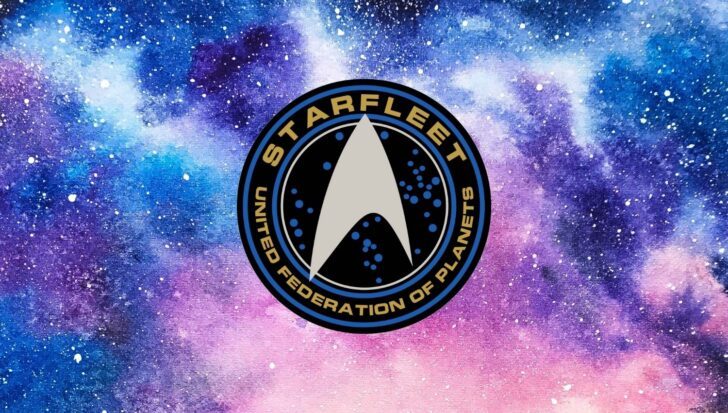
The Invincible class starship was created as a fully armed battleship, a full-fledged fleet carrier, and a mobile base of operations in the year 2384.
Three of these ships were created, including the USS Invincible. At 5255 feet (1607 meters) long and weighing 13,850,000 metric tons, this was truly Starfleets strongest vessel.
The original Enterprise model was about 14 feet (4.2 meters) long.
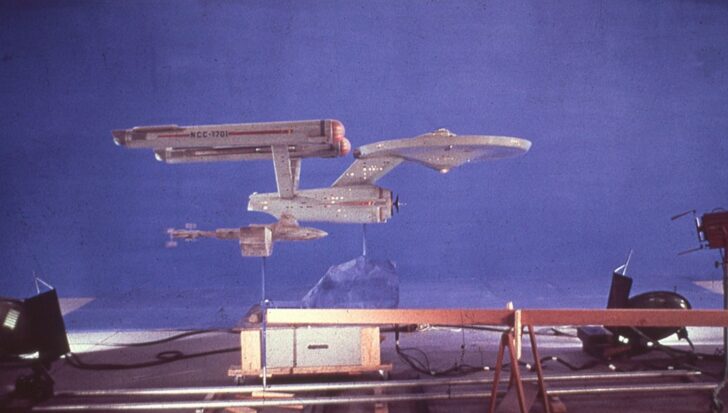
The impressive model was built out of sheet plastic and hardwood and took hundreds of hours to build. It was attached to a mechanical arm to control its direction and angle in flight.
Star Trek TOS was commended for many of its special effects, most notably its ability to show what a starship might look like going faster than the speed of light.
To do this, they used their massive cinema model and a series of black matte backgrounds with stars printed on them, which they superimposed on each other to give the star trail effect we know so well.
To film the transporter scenes, they used foil and tricks of light.
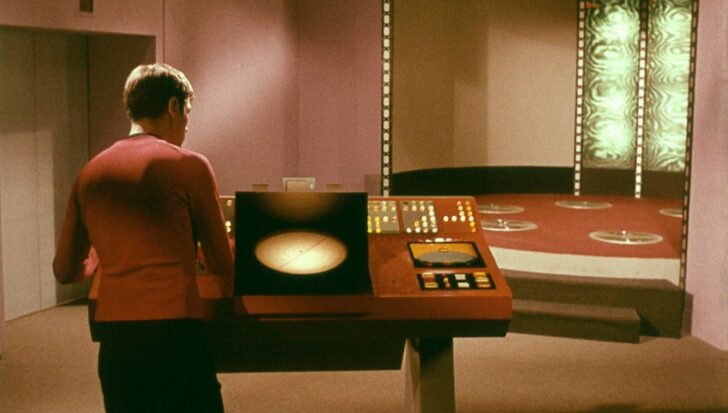
The cinematographers of TOS had to do a lot of work, especially in the early seasons, to show the characters dematerializing and rematerializing somewhere else.
They ended up sprinkling glitter into a beam of light and filmed that effect. They then needed to cut that effect into the shape of the characters and slowly fade them in and out of the scenes.
The Vulcan salute was inspired by an Orthodox Jewish blessing.
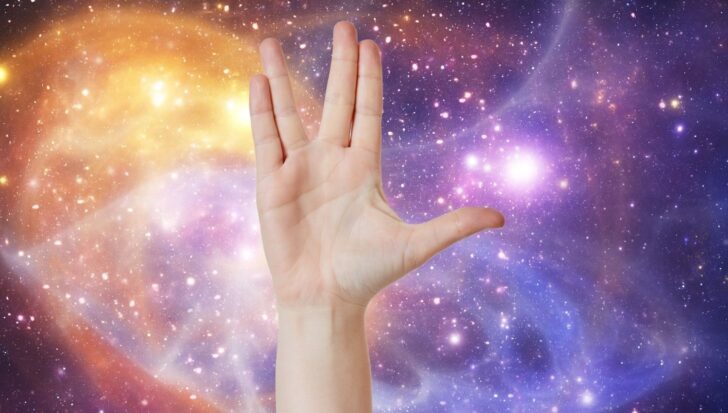
Spock’s famous split-finger, live long and prosper salute is not as alien as we may think.
When Leonard Nimoy was a child living in a Jewish area in New York, he witnessed Orthodox Jewish people at a special ceremony called Shekhina.
The first use of the Vulcan salute was in TOS, during the episode “Amok Time.”
Majel Barrett-Roddenberry was the voice of most Starfleet computers.
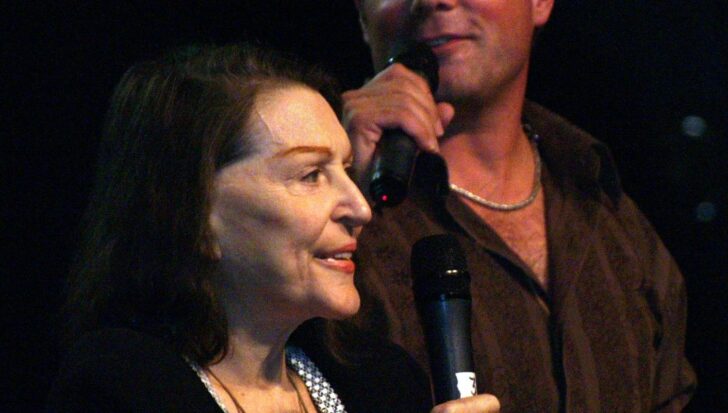
Sometimes referred to as “the first lady of Star Trek,” Barrett has played many characters in the franchise’s series.
You may have recognized her as the voice of most computers in the Federation’s Starfleet up until 2009 when she passed away.
She has also played Lwaxana Troi in The Next Generation (TNG), Nurse Chapel in TOS, and plenty of smaller roles over the years.
Vaughn Armstrong played more characters than anyone else in the Star Trek franchise.
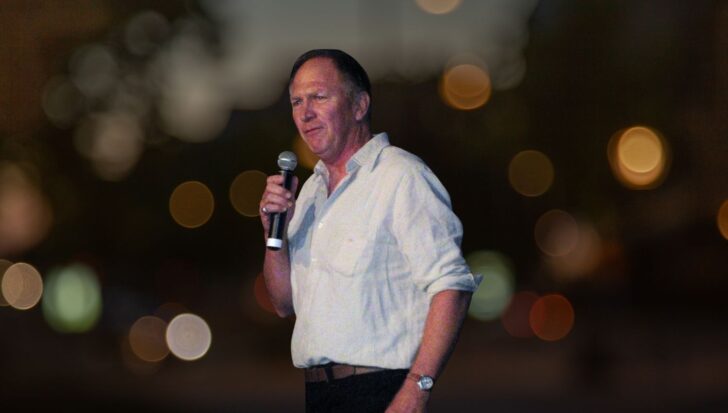
Armstrong played a total of 12 different characters over the years. He was most recognized for his role as Vice Admiral Maxwell in Star Trek: Enterprise.
Many of his roles involved heavy makeup, including two Cardassians, two Klingons, and a Virginian Captain.
Jonathan Frakes’ back injury birthed his character’s iconic movements.
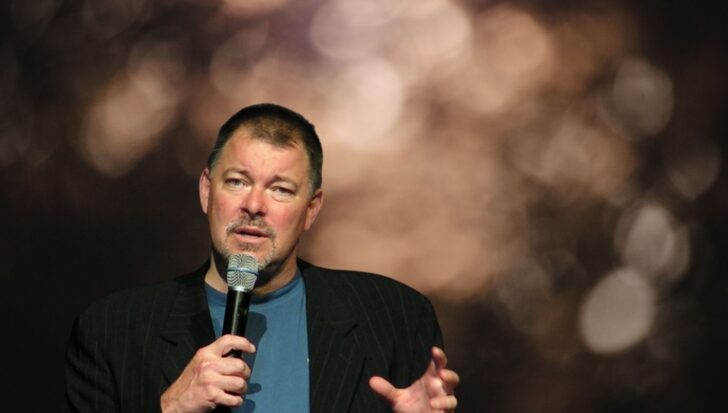
Riker is famous for two movements that have become memes over the years: The Riker Lean and The Riker Maneuver.
Because of a bad back injury before he ever made it onto the Star Trek set, Frakes had to find ways to stay comfortable while doing his scenes.
Leaning on his leg while talking to other characters and maneuvering over the back of chairs to sit down became the most recognizable. Remember to lift with your back!
Star Trek: Voyager won an outstanding seven Emmy awards during its run.

Voyager is well known for its special effects and amazing use of makeup, for which most of it’s Emmy’s were awarded. The series also won 2 Emmy awards for its use of music.
In total, the series got 33 nominations for all kinds of things, from costume design to sound design and even hairstyling. Remember Neelix’s amazing Mohawk?
The original communicator inspired the first mobile phone.

Martin Cooper, an engineer at Motorola, was on a break watching Star Trek when he saw Captain Kirk use his communicator to call Spock.
This invention changed the way humans communicate around the world and is just another example of science fiction becoming a reality.
NASA’s first space shuttle was named after the starship Enterprise.
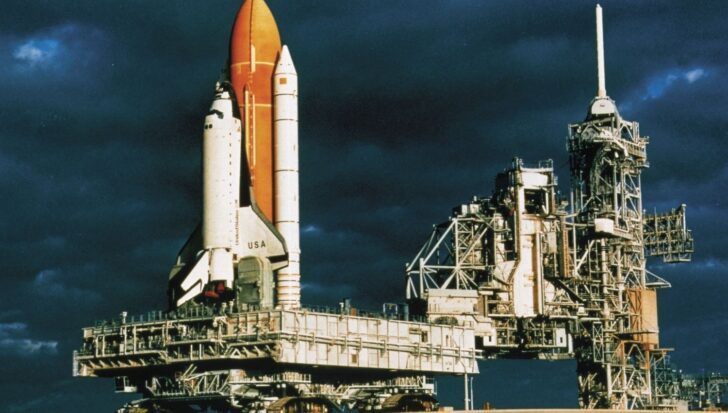
Although it was only ever used in tests for later space flight and didn’t even have engines, the real Enterprise was NASA’s first orbiting space shuttle.
The shuttle was originally named Constitution, but thousands of Trekkies at the time petitioned for it to be renamed after the starship in their favorite show.
In recognition of this, most of the original cast and creator, Gene Roddenberry, were all present at the unveiling ceremony.
Michael Dorn appeared on screen more than any other actor in Star Trek.
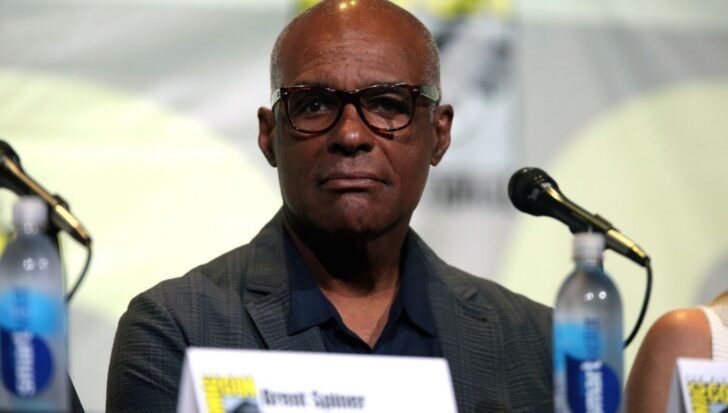
Worf quickly became a fan favorite after his first TV appearance on TNG in 1987, which was supposed to be temporary.
He went on to appear on Deep Space 9 for four more seasons once TNG had ended and again in 2023 for Star Trek: Picard. In total, Dorn made 283 appearances as the character.
This is an incredible feat, considering it took up to three hours to apply the Klingon makeup, and he would need to wear it for as long as 15 hours.
A few of the original cast have had their ashes launched into space.
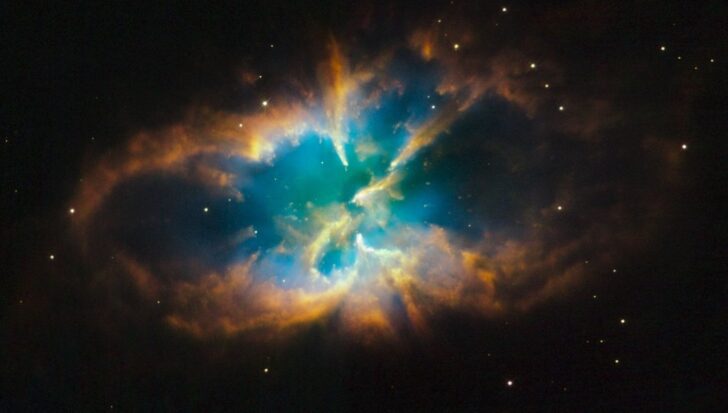
Creator Gene Roddenberry, his wife Majel Barrett, and Nichelle Nichols have all had their ashes spread into the universe.
After their deep connection with space exploration, we can’t think of a better resting place for them.
Four companies offer this unique burial service, with options to be sent into orbit, deep space, onto the surface of the moon, or just to space and back.
Many of the later Star Trek sets were reused from previous series.
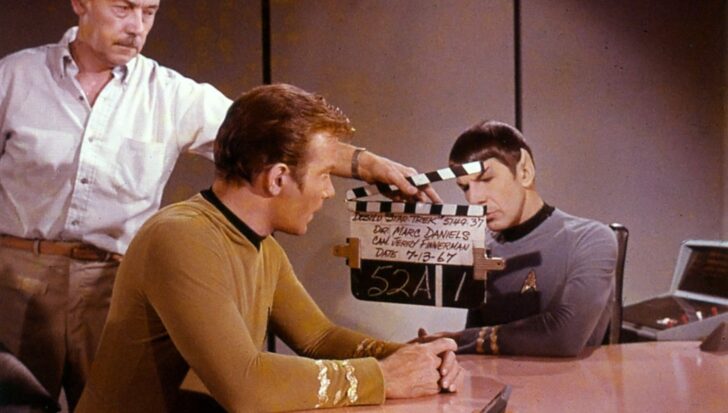
Hollywood has many ways of cutting production costs. One of these is to reuse sets from other shows or previous iterations of the same show. This is no different in Star Trek.
You may recognize Data or Worfs quarters as Captain Kirk’s original quarters from TOS. The Enterprise-D corridors were also reused in many of the films.
They are not stuck to one ship, though. The room where Spock sacrifices himself in TOS was reused for the Klingons, the Ferengi, and the Telerians in TNG.
Mae Jemison was the first real astronaut to appear on Star Trek.
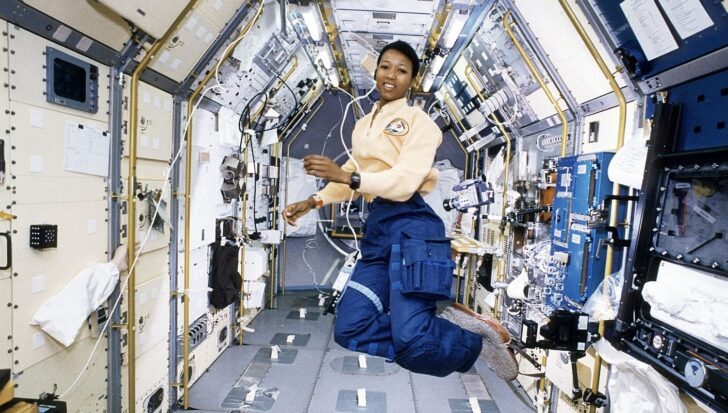
You might know Mae Jemison as the first black woman to enter space, but she was also the first astronaut to appear on Star Trek.
In 1993, Jemison was cast as Lt. Palmer, working under Geordie LaForge in Engineering.
Since then, three other astronauts have guest-starred in the series: E. Michael Fincke and Terry Virts, who appeared in Star Trek: Enterprise.
As one of the most watched and longest-running science fiction franchises, the Star Trek universe is worth exploring. The deep lore of this show could keep us awake for an eon.
This shows cosmic charm has found its way into Earth’s history. With a phaser blast and a shot of Chech’tluth, we salute you. Live long and prosper!

